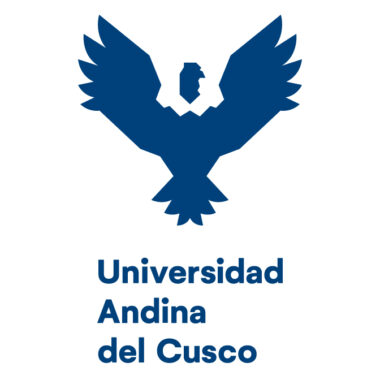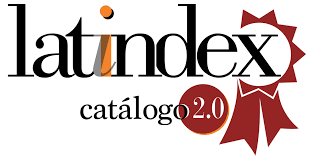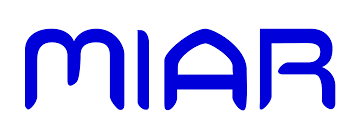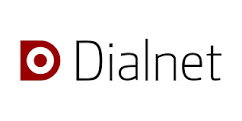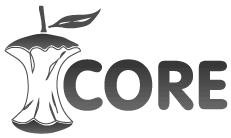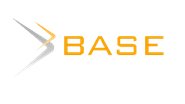Educational Transformations: A Bibliometric Analysis of the Behavior of AI and ICT in Scientific Production
DOI:
https://doi.org/10.36881/yachay.v14i1.1025Keywords:
Artificial Intelligence, Information and Communication Technologies (ICT), Learning Processes, Educational InnovationsAbstract
This bibliometric study aims to analyze the influence of Artificial Intelligence (AI) and Information and Communication Technologies (ICT) on scientific production related to learning processes and educational innovation. A systematic review of documents indexed in the Scopus database was conducted, covering the period from 2013 to 2023. The search strategy targeted titles, abstracts, and keywords, and data were analyzed using Bibliometrix and visualized through VOSviewer. Results reveal a consistent increase in scientific output since 2015, peaking in 2023. The most represented disciplines include Social Sciences, Computer Science, and Engineering. Authorial concentration patterns align with Lotka’s Law, while journal distribution follows Bradford’s Law. China, the United Kingdom, and the United States are among the most cited countries. It is concluded that the integration of AI and ICT in education has stimulated knowledge production and reshaped both research and pedagogical practices. However, challenges persist, including the digital divide, unequal knowledge dissemination, and the urgent need for adequate teacher training to ensure effective technological integration.
Downloads
References
Abeliuk, A., & Gutiérrez, C. (2021). Historia y evolución de la inteligencia artificial. Revista Bits de Ciencia (21), 14-21. https://revistasdex.uchile.cl/index.php/bits/article/view/2767/2700
Alenezi, H., & Faisal, M. (2020). Utilizing crowdsourcing and machine learning in education: Literature review. Education and Information Technologies, 25, 2971–2986. https://doi.org/10.1007/s10639-020-10102-w
Alvarado, R. (2016). El crecimiento de la literatura sobre la ley de Bradford. Investigación Bibliotecológica: Archivonomía, Bibliotecología e Información, 30(68), 51-72. https://doi.org/10.1016/j.ibbai.2016.02.003
Anuyahong, B., Rattanapong, C., & Patcha, I. (2023). Analyzing the Impact of Artificial Intelligence in Personalized Learning and Adaptive Assessment in Higher Education. International Journal of Research and Scientific Innovation. 10(4) 88-93. https://doi.org/10.51244/ijrsi.2023.10412
Ariza, T., Bermúdez, M., Quevedo-Blasco, R., & Buela-Casal, G. (2012). Evolución de la legislación de doctorado en los países del EEES. Revista iberoamericana de psicología y salud, 3(2), 89-108. https://dialnet.unirioja.es/servlet/articulo?codigo=3939394
Ariza, T., Granados, M., Ramiro, M., & Gómez-García, A. (2011). Una década de la Revista Española de Orientación y Psicopedagogía: un análisis bibliométrico de su evolución. Revista Española de Orientación y Psicopedagogía, 22(1), 38-57. https://revistas.uned.es/index.php/reop/article/view/76
Bai, J., Marin, V., Jung, I., & Zawacki-Richter, O. (2023). Future Prospects of Artificial Intelligence in Education: A Preliminary Analysis of Educator Perspectives from Focus Groups in Japan, Spain, and Germany. Ubiquity Proceedings, 3(1), https://doi.org/10.5334/uproc.74
Barrett, B., Moran, A. & Woods, J. (2014). Meteorology meets engineering: an interdisciplinary STEM module for middle and early secondary school students. International Journal of STEM Education, 1(1), 1-7. https://doi.org/10.1186/2196-7822-1-6
Bekmanova, G., Ongarbayev, Y., Somzhurek, B., & Makatayev, N. (2021). Personalized training model for organizing blended and lifelong distance learning courses and its effectiveness in Higher Education. Journal of Computing in Higher Education, 33, 668-683. https://doi.org/10.1007/s12528-021-09282-2
Bennett, L. (2023). Optimising the Interface between Artificial Intelligence and Human Intelligence in Higher Education. International Journal of Teaching, Learning and Education. 3(1). https://doi.org/10.22161/ijtle.2.3.3
Bonilla, M., Benavides, J., Espinoza, F., & Castillo, D. (2020 ). Estrategias metodológicas interactivas para la enseñanza y aprendizaje en la educación superior. Revista Científica UISRAEL, 7(3), 25-36. https://doi.org/10.35290/rcui.v7n3.2020.282
Chen, X., Xie, H., Zou, D., & Hwang, G. (2020). Application and theory gaps during the rise of Artificial Intelligence in Education. Computers and Education: Artificial Intelligence, 1, 120. https://doi.org/10.1016/j.caeai.2020.100002
Clark, L., Majumdar, S., Bhattacharjee, J. y Hanks, A. (2015). Creating an atmosphere for STEM literacy in the rural south through studentcollected weather data. Journal of Geoscience Education, 63(2), 105-115. https://doi.org/10.5408/13-066.1
Delgado, N., Carrasco, L., de la Maza, M., & Etxabe-Urbieta, J. (2024). Aplicación de la Inteligencia Artificial (IA) en Educación: Los beneficios y limitaciones de la IA percibidos por el profesorado de educación primaria, educación secundaria y educación superior. Revista Electrónica Interuniversitaria de Formación del Profesorado, 27(1), 207-224. https://doi.org/10.6018/reifop.577211
Delgado. T., Martínez. C., & Tigrero. V. (2022). Desarrollo de competencias digitales del profesorado mediante entornos virtuales. Revista Latinoamericana de Estudios Educativos, 52(3). https://doi.org/10.48102/rlee.2022.52.3.512
Delgado-Wise, R., Chávez-Elorza, M., & Rodríguez-Ramírez, H. (2016). La innovación y la migración calificada en la encrucijada: reflexiones a partir de la experiencia mexicana. REMHU-Revista Interdisciplinar Da Mobilidade Humana, 24(47), 153-174. https://www.scielo.br/j/remhu/a/4WKrwZHP47ffxTrrGZQgdcN/?lang=es
Denes, G. (2023). A case study of using AI for General Certificate of Secondary Education (GCSE) grade prediction in a selective independent school in England. Computers and Education: Artificial Intelligence, 4, 1-10. https://doi.org/10.1016/j.caeai.2023.100129
Domènech-Casal, J. (2019). STEM: Oportunidades y retos desde la Enseñanza de las Ciencias. Universitas Tarraconensis. Revista de Ciències de l’Educació, 1(2), 154-168. https://doi.org/10.17345/ute.2019.2.2646
Durak, H., & Saritepeci, M. (2018). Analysis of the relation between computational thinking skills and various variables with the structural equation model. Computers & Education, 116, 191-202. https://doi.org/10.1016/j.compedu.2017.09.004
Egghe, L. (2006). Theory and practise of the g-index. Scientometrics, 69(1), 131-152. https://doi.org/10.1007/s11192-006-0144-7
European Commission. (2015). Science education for Responsible Citizenship. https://doi.org/10.2777/12626
Fajardo, Z., Gamboa, M., Valdivieso, M., & Murillo, J. (2024). Cómo impacta la inteligencia artificial en la educación. Reciamuc, 8(1), 62-70. https://doi.org/10.26820/reciamuc/8.(1).ene.2024.62-70
Farrelly T, & Baker, N. (2023) Generative Artificial Intelligence: Implications and Considerations for Higher Education Practice. Education Sciences, 13(11), 1109. https://doi.org/10.3390/educsci13111109
Ferrada, C., Díaz-Levicoy, D., Puraivan, E. & Silva-Díaz, F. (2020). Análisis bibliométrico sobre Educación Financiera en Educación Primaria. Revista de Ciencias Sociales (Ve), XXVI(Número especial 2), 225-242. https://hdl.handle.net/20.500.12536/1045
Ferrada, C., Puraivan, E., Silva, F., & Díaz Levicoy, D. (2021) ‘Robótica aplicada al aula en Educación Primaria: un caso en el contexto español’. Sociología y Tecnociencia, 11(2), 240-259. https://doi.org/10.24197/st.Extra_2.2021.240-259
García, W. (2022). La innovación educativa como elemento transformador para la enseñanza en la unidad educativa “Augusto Solórzano Hoyos”. Revista Educare - UPEL-IPB - Segunda Nueva Etapa 2.0, 26(2), 287-306. https://doi.org/10.46498/reduipb.v26i2.1775
Gómez. V, Muriel. M., & Londoño. (2019). El papel del docente para el logro de un aprendizaje significativo apoyado en las TIC. Encuentros, 17(2), 118.131. https://doi.org/http://bibliotecadigital.iue.edu.co//jspui/handle/20.500.12717/2727
Gómez-Loero, L. (2024). Una experiencia sistematizada: La inteligencia artificial, ¿aliada en la enseñanza o amenaza para el futuro? Revista Multidisciplinaria Voces de América y el Caribe, 1(1), 327-358. https://doi.org/10.5281/zenodo.11254519
González-Ciriaco, L., & Medina-Marín, A. (2023). Avances y desafíos éticos en la integración de la IA en la producción científica. Journal of Scientific Metrics and Evaluation, 1(I), 48-67. https://doi.org/10.69821/JoSME.v1iI.2
Granados, M., Ariza, T., Gómez-García, A. y Ramiro, M. (2011). Estudio bibliométrico de Aula Abierta. Aula Abierta, 39(3), 97-111. https://dialnet.unirioja.es/servlet/articulo?codigo=3691532
Granda. A., Espinoza. F, y Mayon. E. (2019). Las TICs como herramientas didácticas del de enseñanza-aprendizaje. Conrado, 15(66), 104-110. http://scielo.sld.cu/scielo.php?script=sci_arttext&pid=S1990-86442019000100104
Gutiérrez. M., Pinedo., & Gil. P. (2022). Competencias TIC y mediáticas del profesorado.: Convergencia hacia un modelo integrado AMI-TIC. Comunicar: Revista Científica de Comunicación y Educación. https://doi.org/10.3916/C70-2022-02
Holmlund, T, Lesseig, K. y Slavit, D. (2018). Making sense of “STEM education” in K-12 contexts. International Journal of STEM Education, 5(32). https://doi.org/10.1186/s40594-018-0127-2
Huang, X., & Qiao, C. (2022). Enhancing Computational Thinking Skills Through Artificial Intelligence Education at a STEAM High School. Science & Education, 1-21. https://doi.org/10.1007/s11191-022-00392-6
Hwang, G., & Tu, Y. (2021). Roles and Research Trends of Artificial Intelligence in Mathematics Education: A Bibliometric Mapping Analysis and Systematic Review. Mathematics, 9(6), 1-19. https://doi.org/10.3390/math9060584
Jaramillo, D. (2024). La gestión escolar basada en inteligencia artificial para mejorar el rendimiento académico. South Florida Journal of Development, 5(5), e3914. https://doi.org/10.46932/sfjdv5n5-016
Johnson, M. (2012). Editors’ response: The uses and abuses of bibliometrics. Reproductive BioMedicine Online, 25(4), 435. https://doi.org/10.1016/j.rbmo.2012.07.012
Kamalski, J., y Kirby, A. (2012). Bibliometrics and urban knowledge transfer. Cities, 29, S3-S8. https://doi.org/10.1016/j.cities.2012.06.012
Kerimbayev, N., Beisov, N., Kovtun, A., Nurym, N., & Akramova, A. (2020). Robotics in the international educational space: Integration and experience. Education and Information Technologies, 25, 5835-5851. https://doi.org/10.1007/s10639-020-10257-6
Kong, S., Cheung, W., & Tsang, O. (2023). Evaluating an artificial intelligence literacy programme for empowering and developing concepts, literacy and ethical awareness in senior secondary students. Education and Information Technologies, 28, 4703-4724. https://doi.org/10.1007/s10639-022-11408-7
Kostoff, R., Tshiteya, R., Pfeil, K., Humenik, J. & Karypis, G. (2005). Power source roadmaps using bibliometrics and database tomography. Energy, 30(5), 709-730. https://doi.org/10.1016/j.energy.2004.04.058
Kuhail, M., Alturki, N., Alramlaui, S., & Alhejori, K. (2021). Interacting with educational chatbots: A systematic review. Education and Information Technologies, 28, 973-1018. https://doi.org/10.1007/s10639-022-11177-3
Lee, D., & Yeo, S. (2022). Developing an AI-based chatbot for practicing responsive teaching in mathematics. Computers & Education, 191, 1-17. https://doi.org/10.1016/j.compedu.2022.104646
Lim , Y., Darmesah, G., Pang, N., & Ho, (2023). A bibliometric analysis of structural equation modeling in mathematics education. Eurasia journal of mathematics, science and technology education, 19(12), em2365. https://doi.org/10.29333/ejmste/13838
Lippert, A., Shubeck, K., Morgan, B., Hampton, A., & Graesser, A. (2020). Multiple Agent Designs in Conversational Intelligent Tutoring Systems. Technology, Knowledge and Learning, 25, 443-463. https://doi.org/10.1007/s10758-019-09431-8
Liu, Q., Huang, J., Wu, L., & Ba, S. (2020). CBET: design and evaluation of a domain-specific chatbot for mobile learning. Universal Access in the Information Society, 19, 655-673. https://doi.org/10.1007/s10209-019-00666-x
Meho, L. & Yang, K. (2007). A new era in citation and bibliometric analyses: Web of Science, Scopus, and Google Scholar. Journal of the American Society for Information Sci and Tech, 58(13), 2105-2125. https://doi.org/10.48550/arXiv.cs/0612132
Mohamed, Z., Hidayat, R., Suhaizi, N., Sabri, N., Mahmud, M., & Baharuddin, S. (2022). Artificial intelligence in mathematics education: A systematic literature review. International Electronic Journal of Mathematics Education, 17(3), 1-11. https://doi.org/10.29333/iejme/12132
Okello, T. (2023). Analyzing the Impacts of Artificial Intelligence on Education. IAA Journal Of Education, 9(3):8-13. https://doi.org/10.59298/iaaje/2023/2.10.1000
Pritchard, A. (1969). Statistical bibliography or bibliometrics? Journal of Documentation, 25(4), 348-349.
Rizvi, M. (2023). Exploring the landscape of artificial intelligence in education: Challenges and opportunities. 2023 5th International Congress on Human-Computer Interaction, Optimization and Robotic Applications (HORA), 01-03. https://doi.org/10.1109/HORA58378.2023.10156773
Robles, D., & Quintero, C. (2020). Intelligent System for Interactive Teaching through Videogames. Sustainability, 12(9), 1-14. https://doi.org/10.3390/su12093573
Román -Acosta, D., Alarcón-Osorio, D., & Rodríguez-Torres, E. (2023). Implementación de ChatGPT: aspectos éticos, de edición y formación para estudiantes de posgrado. Revista Senderos Pedagógicos, 15(1), 15–31. https://doi.org/10.53995/rsp.v15i1.1592
Sallu, S., Sianturi, N., Purwoko, B., Herliansyah, Y., & Manuhutu, M. (2023). Learning in Higher Education Based on Artificial Intelligence (AI) with Case Based Reasoning (CBR). (2023). Journal of Namibian Studies: History Politics Culture, 34, 1049-1064. https://doi.org/10.59670/jns.v34i.1191
Sharma, P., & Harkishan, M. (2022). Designing an intelligent tutoring system for computer programing in the Pacific. Education and Information Technologies, 27, 6197-6209. https://doi.org/10.1007/s10639-021-10882-9
Shi, J., & Xuwei, Z. (2023). Integration of AI with Higher Education Innovation: Reforming Future Educational Directions. International Journal of Science and Research (IJSR). 12(10) 1727-1731. https://doi.org/10.21275/sr231023183401
Tarisayi, K. (2024). Strategic leadership for responsible artificial intelligence adoption in higher education. CTE Workshop Proceedings, 11, 4-14. https://doi.org/10.55056/cte.616
Turner, S. (2011). Pupils' attitudes towards primary and secondary science. Germany: Lambert Academic Publishing. https://repository.lboro.ac.uk/articles/book/Pupils_attitudes_towards_primary_and_secondary_science_/9352352
UNESCO. (2019). Consenso de Beijing sobre inteligencia artificial y la educación. Beijing: Organización de las Naciones Unidas para la Educación, la Ciencia y la Cultura. https://unesdoc.unesco.org/ark:/48223/pf0000368303
Wardat, Y., Tashtoush, M., Alali, R., & Jarrah, A. (2023). ChatGPT: A revolutionary tool for teaching and learning mathematics. Eurasia Journal of Mathematics, Science and Technology Education, 19(7), 1-18. https://doi.org/10.29333/ejmste/13272
Zhang, K., & Aslan, A. (2021). AI technologies for education: Recent research & future directions. Computers and Education: Artificial Intelligence, 2, 1-11. https://doi.org/10.1016/j.caeai.2021.100025
Zhou, C. (2023). Integration of modern technologies in higher education on the example of artificial intelligence use. Education and Information Technologies, 28, 3893-3910. https://doi.org/10.1007/s10639-022-11309-9
Zupic, I. & Čater, T. (2014). Bibliometric Methods in Management and Organization. Organizational Research Methods, 18(3), 429-472. https://doi.org/10.1177/1094428114562629
Downloads
Published
How to Cite
Issue
Section
License
Copyright (c) 2025 Cristian Ferrada Ferrada, Francisco José Kroff Trujillo, Cristian Márquez Triviño

This work is licensed under a Creative Commons Attribution 4.0 International License.
You are free to:
- Share — copy and redistribute the material in any medium or format
- Adapt — remix, transform, and build upon the material
- The licensor cannot revoke these freedoms as long as you follow the license terms.
Under the following terms:
-
Attribution — You must give appropriate credit, provide a link to the license, and indicate if changes were made. You may do so in any reasonable manner, but not in any way that suggests the licensor endorses you or your use.

